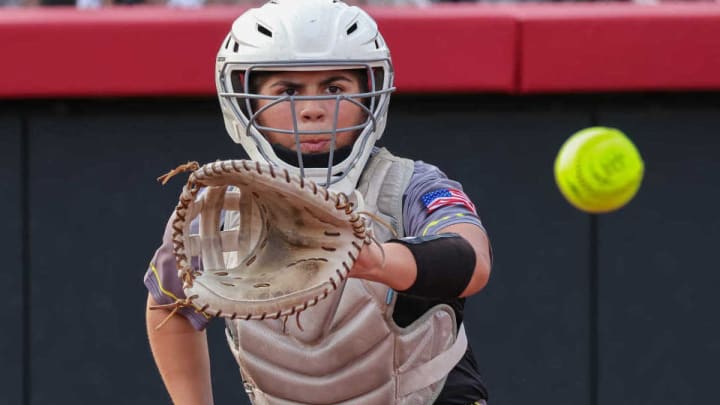NFHS to allow on-field communication devices for high school softball; Florida coaches react

Technology’s influence on high school sports continues to grow and it took a major step forward, Monday, when the National Federation of State High School Associations (NFHS) announced that it has approved the use of on-field communication devices.
High school softball coaches will now be allowed to use various electronic communication devices to communicate with their catches while the catcher is on the field playing defense. However, the devices may not be used to communicate with any other players on the diamond.
The new rules was announced via a press release from the NFHS on Monday. The NHSA Softball Rules Committee had proposed the rule at its annual rules meeting last month in Indianapolis, Indiana and it was approved by the NFHS Board of Directors during their annual meetings over the weekend in Boston. A similar rule was adopted for high school baseball last year.
The use of the devices is optional and will become legal for the 2025 season.
“This change is the result of analysis of current data, state association experimentation and a positive response from the membership,” said Sandy Searcy, NFHS director of sports and liaison to the Softball Rules Committee. “The committee has made these changes to support the use of emerging technology within the sport of softball. Being a permissive rule, the use of this one-way electronic communication will allow those who choose to embrace the technology an additional option to communicate with the catcher while on defense. It will also maintain the ability for those who prefer a more traditional approach to communicate using signals or a playbook/playcard to continue that approach.”
Early reaction to the new rules seems to favorable from Florida high softball coaches.
“This rule should be beneficial to the game,” said Montverde Academy softball coach Kahley Armstrong. “It will help eliminate any communication issues between a coach and catcher due to field conditions that cause a great amount of distance between the two, plus it will also help solve communication issues during loud or noisy game situations.”
“I definitely think it’s a good thing," added Inspiration Academy coach Brian Commerford. "Baseball has had success with catcher ear pieces, so I think softball will see the same success. It will let coaches communicate their signs quicker and more seamless without negatively impacting the flow of the game.”
One other coach, however, may adopt to the new rule a little more slowly.
“For the past several years, I have been fortunate enough to have a catcher that I trust to call the game for us," Land O' Lakes coach Mitch Wilkins, who has a state championship to his credit. "As long as it doesn’t slow the game down then I don’t have a problem with it and sometime in the future, I might use it myself.”
According the NFHS press release, accommodating one-way communication to the catcher changed the language to two different sections of the NFHS Softball Rules Book.
Rule 1-8-6 now reads, “Devices such as earpieces, electronic bands and “smart” watches are now permitted as an EXCEPTION within the rule provided the player does not utilize said device to return correspondence to the coaching staff. Prior to this change, team personnel could record or transmit information pertaining to their players or team’s performance, but could not communicate that information directly to players on the field during play.”
In addition, the penalty from Rule 3-6-11 was added to Rule 1-8-6 as well, with violators subject to ejection unless the offense is ruled to be “of a minor nature.” This penalty has been in place for Rule 3-6-11 allowing the umpire to issue a warning if the offense is minor and then eject if the offense is repeated.
In addition to permitting the one-way communication devices, the updated version of Rule 3-6-11 regarding “Bench and Field Conduct” specifies that coaches are prohibited from using the device “to communicate with any other team member while on defense or any team member while on offense” and the coach cannot use the device “outside the dugout/bench area.”
Another softball rules alteration for the 2025 season occurred in Rule 9-3-2b, where the Scoring and Record Keeping details surrounding a player’s batting record were edited to align with the enforcement in Rule 8-6-11, which covers the runner’s actions and provides the direct penalty for those actions.
A complete listing of the softball rules changes will be available on the NFHS website at www.nfhs.org. Click on “Activities & Sports” at the top of the home page and select “Softball.”
According to the most recent NFHS High School Athletics Participation Survey, 344,952 girls in 15,406 high schools played fast-pitch softball in 2022-23 making it the fifth-most popular girls sport, while an additional 6,058 girls participated in slow-pitch softball.
